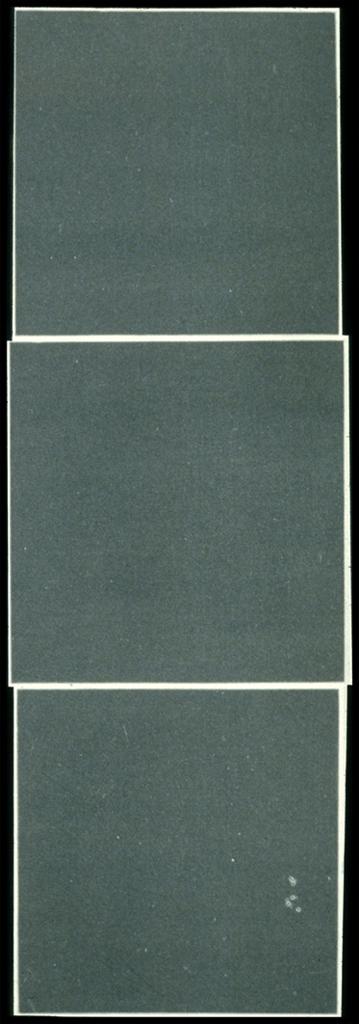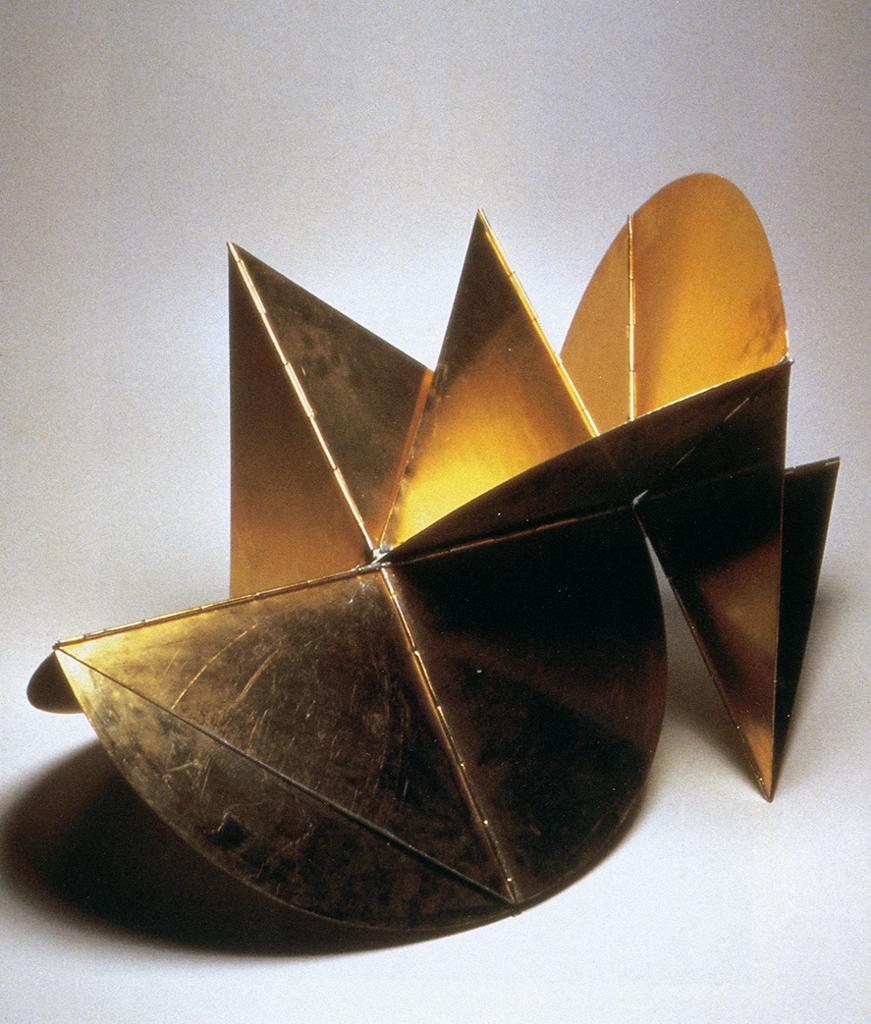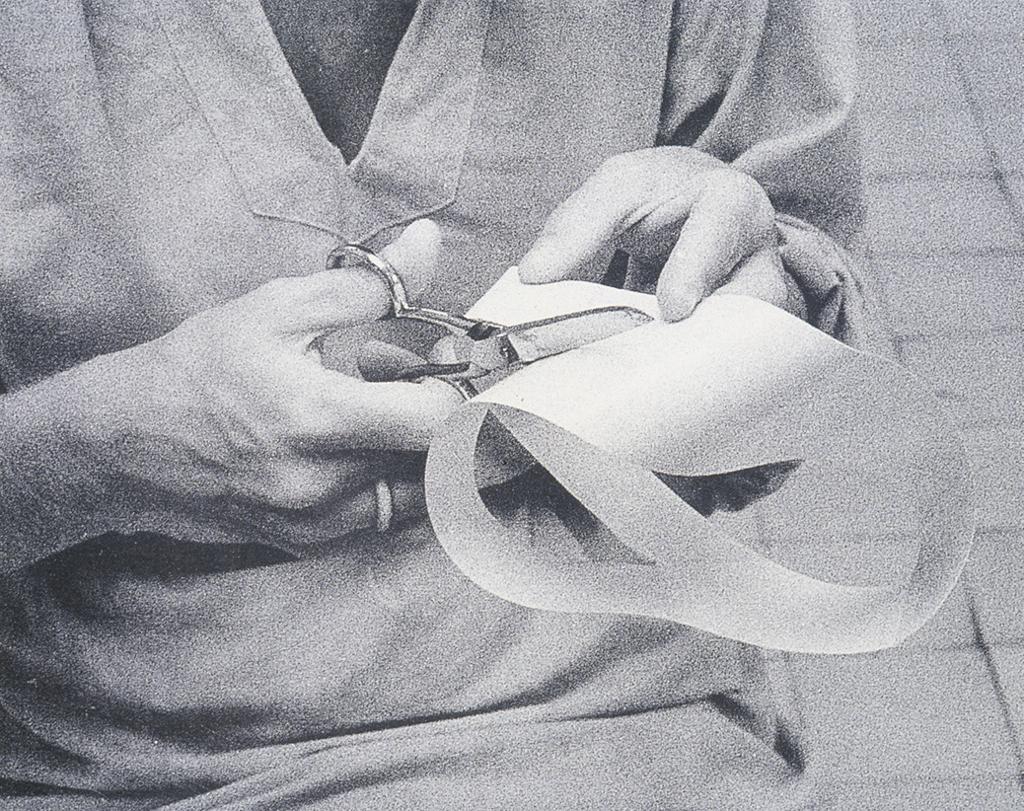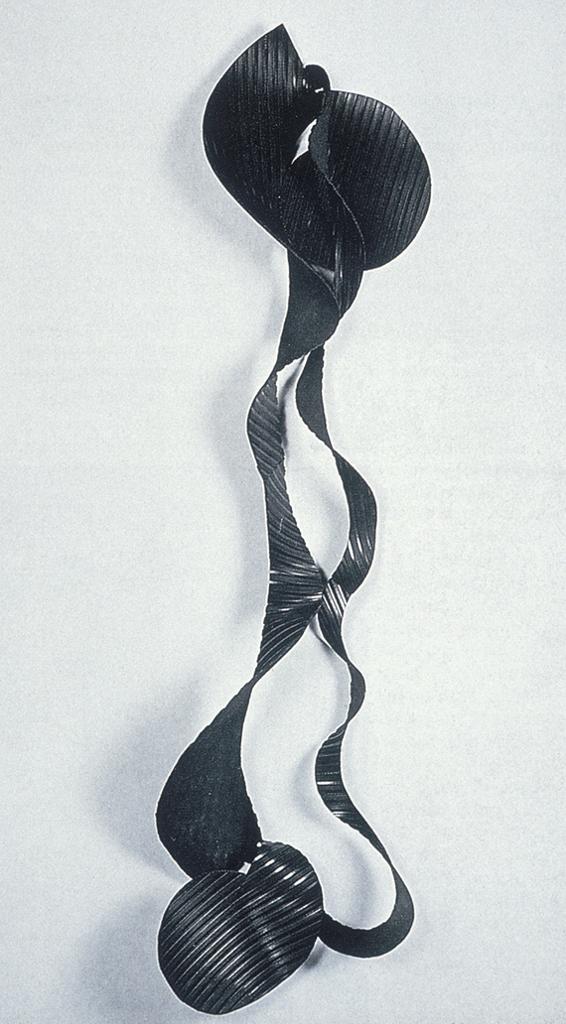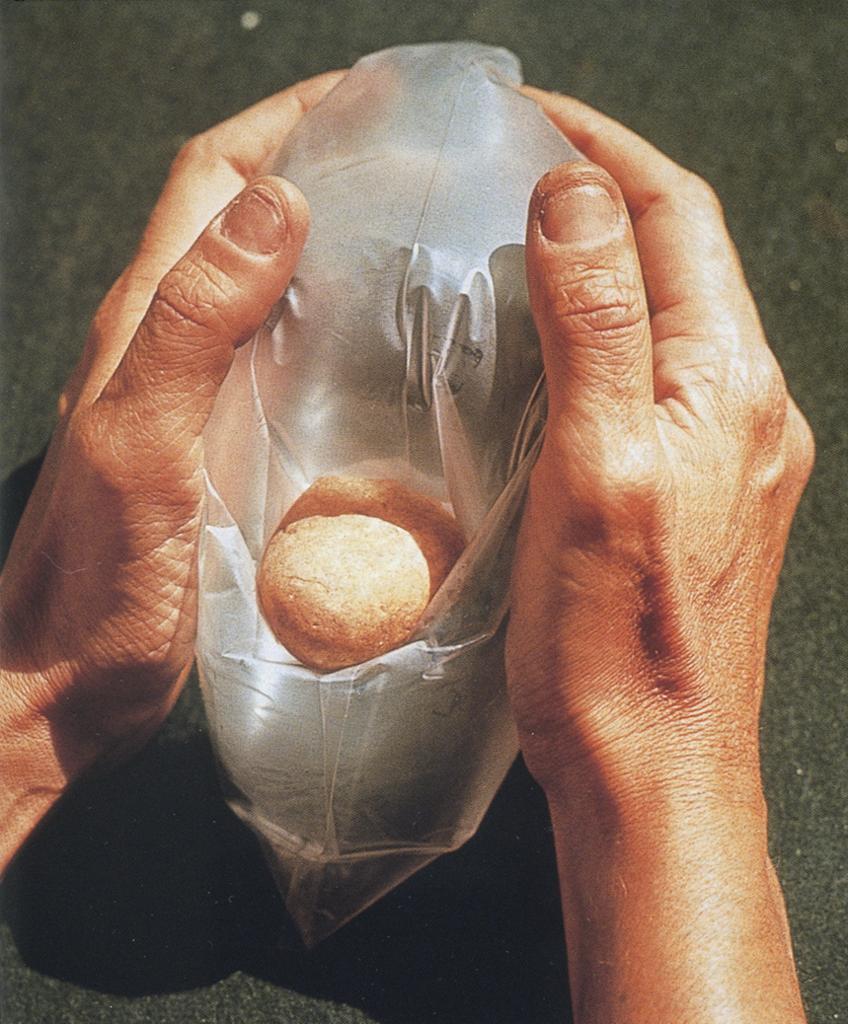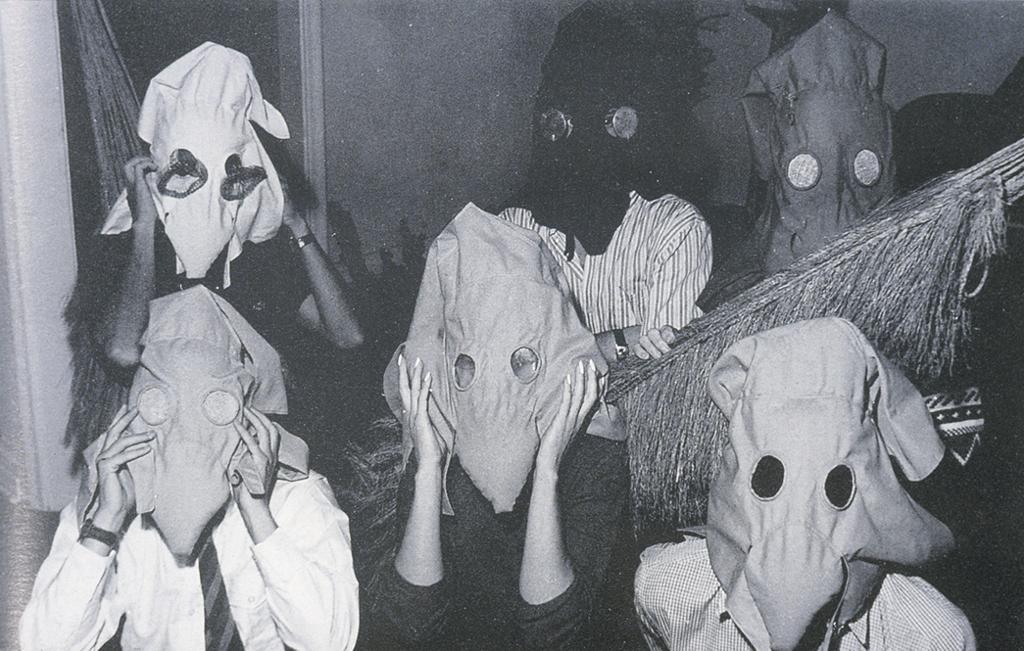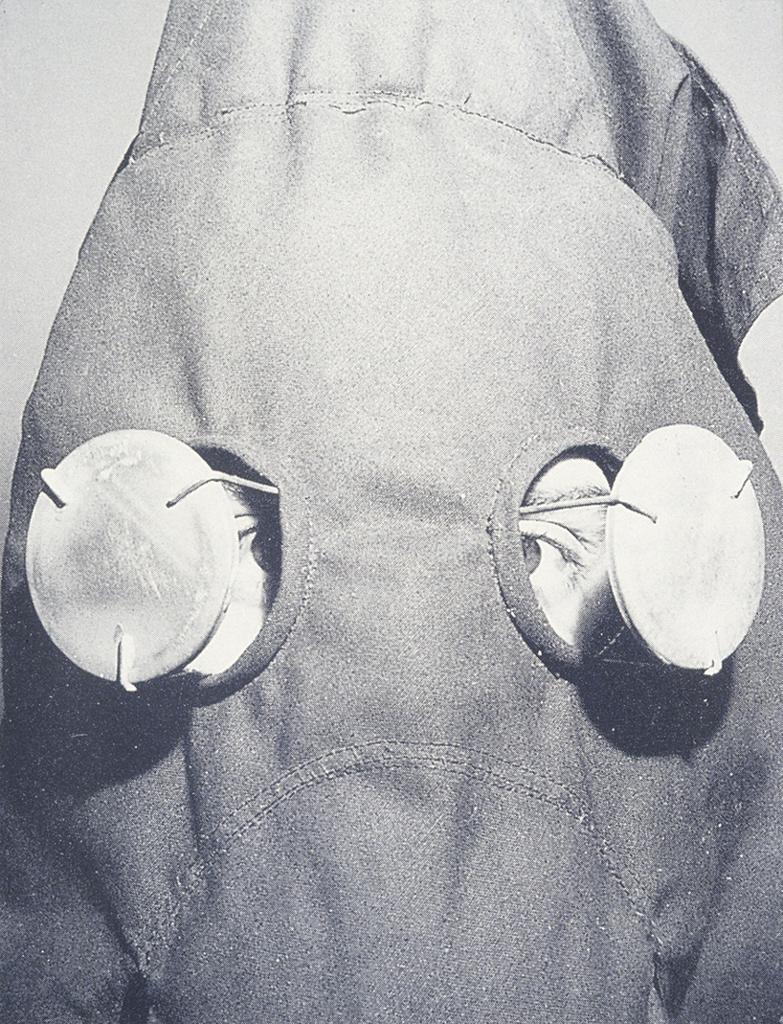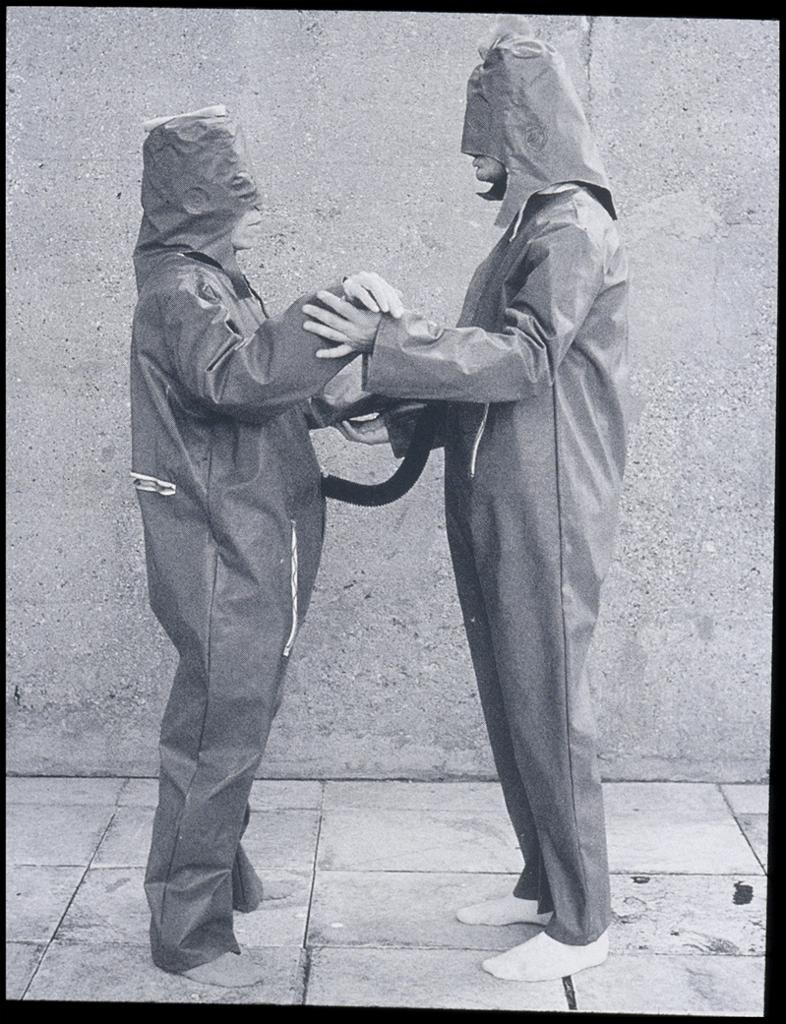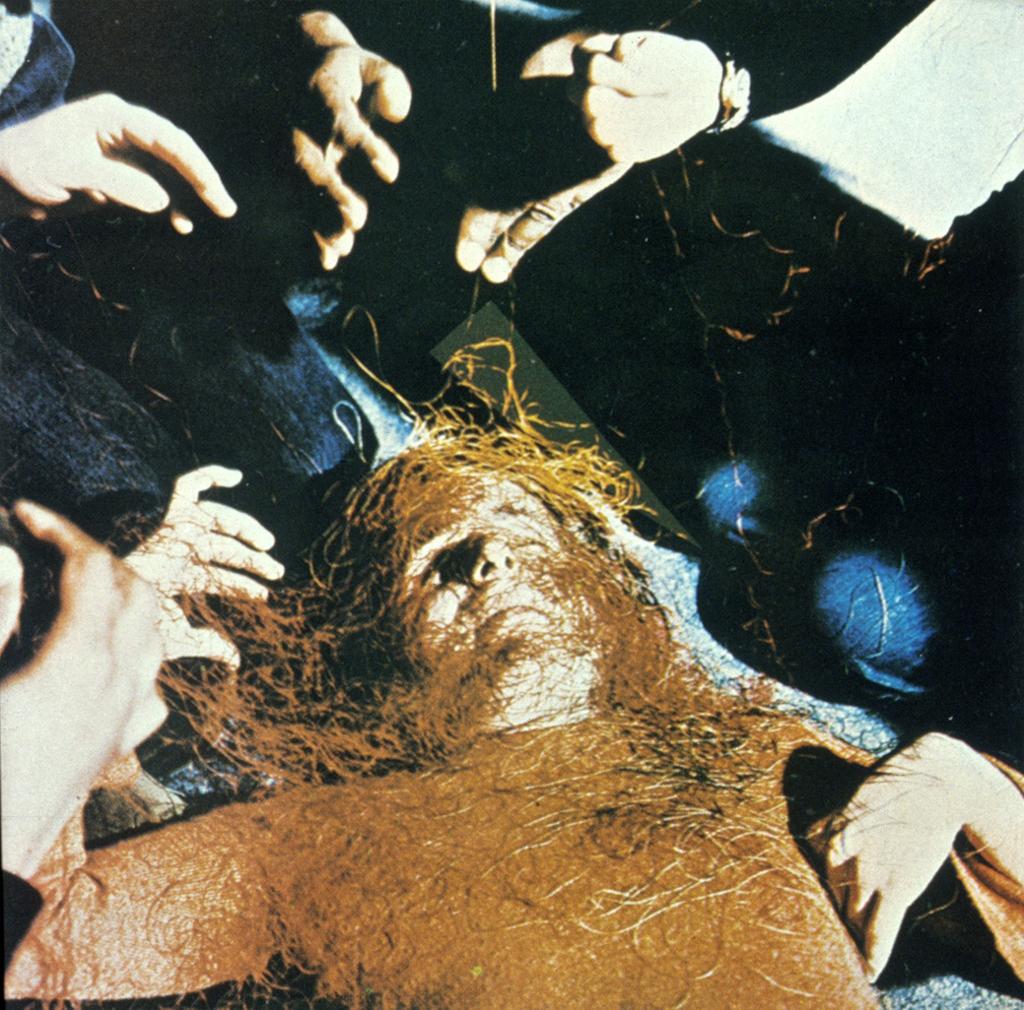Espaço modulado (Modulated Space) 1959
Many of Lygia Clark’s earlier works, such as this painting, attempt to achieve her idea of the “organic line” through painting. The organic line is the idea of the line formed by the discontinuity and subsequent negative space between surfaces. She considered it an organic reality that had already existed: a discovery rather than a creation, and a representation of the separation that exists between all things. These works are the beginning of her fascination between the inside and outside and her attempt to create continuity between two people, or between a piece and a spectator.
Máquina (part of the Bichos, or 'creatures,' group of sculptures) 1960-1962
The Bichos sculptures are the beginning of Lygia Clark’s fascination with the concept of a work of art as an interaction between a piece and the audience, rather than the object itself. These works were intended to be touched and manipulated by the viewer. As suggested by the title, Clark viewed these metal sculptures as holding within themselves the potential for motion; this idea is a part of Neo-Concretism and its view of works of art as “quasi-bodies.” (Best 82) She described the Bicho as having “its own circuit of movements that react to the beholder’s stimuli,” as a “living organism” whose movement depends on and fuses with the action of the viewer. (Butler 160) Kinetic artist David Medalla described the Bichos as having independent movement after unpacking them for a show. He cites an experience of “participatory propulsion” in which, as he dropped one of the sculptures, it unfolded itself swiftly until, almost by magic, from a flat two-dimensional piece it transformed itself into a spatial construction shaped like an abstract bird.” (Best 89) The art, as conceived by Clark, cannot exist without action and participation. This series is one of a number of sculptures created by Clark during this time, such as Trepantes, made of metal and sometimes incorporating wood as well.
Caminhando (Walking) 1963
Caminhando began Clark’s exploration of works she called “propositions,” in which the art work itself was not an object or image but rather the experience of interaction between the piece and the audience. Caminhando is an exercise in which the participant makes a paper Möbius strip and then cut the paper along its length until it becomes too narrow to continue; the idea behind the name of the piece is that the participant imagines their hands “walking” along the paper strip. This work involves Clark’s ideas about the unbroken organic line and the transcendence of traditional ideas of space, as the Möbius strip can be said to have no clear “inside” or “outside,” an idea that Clark explores in later works such as O eu o e tu and her ideas about sensory objects, and that was strongly related to her perception of herself. Caminhando is often considered the point of transition in Clark’s work to her conception of the “act” of art.
Obra mole (Soft Work or Grub) 1964
Clark’s Obras moles, or Grubs, like the Bichos, are rubber sculptures that are meant to be manipulated by the beholder so that the action of manipulation and change becomes a part of the piece itself. The Obras are even more malleable and subject to change by the participant than the Bichos, and they incorporate the element of lacking a clear orientation or distinction between the inside and outside; in this way, they resemble the ambiguity in terms of space of the Caminhando piece. These works were often displayed hanging from trees or hooks or arranged to look as if “climbing” ladders.
Pedro e ar (Air and Stone) 1966
When Clark first conceptualized this piece, she described it as a sort of “extremely disturbing birth:” (Butler 47) the evocative way in which the stone is enveloped in (or perhaps emerging from) the bag suggests certain biological processes of creation and death that are so prominent in many of Clark’s later works: consumption, birth, and sexual penetration, to name a few. The womb-like furrow in which the stone rests can be seen as leading into some of her later works involving suits and/or masks that “envelop” the participant. In this work, we can also see the continuation of her fascination with negative space. Pedro e ar shows a transition in Clark’s work towards more unconventional art “objects,” which she herself became aware of as she moved from sculpture to more conceptual pieces. The malleability of the bag, contrasted with the weight and hardness of the stone, also displays Clark’s exploration of the tactile, rather than the visual, as the subject of the piece.
Mascaras sensoriais (Sensory Masks) 1967
The Mascaras sensoriais display a tendency of Clark’s later works towards the immersive and the tactile. The distorted vision and the enclosed space of the masks force the participant to experience reality through a changed perspective, evoking emotion and spurring the participant towards introspection. The envelopment of the self in the hood suggests a womb-like enclosure, a recurring focus in Clark’s works, and explores the area between claustrophobia and claustral joy, depending on the experience of the individual. Some have also suggested a link between these masks and the political atmosphere of Clark’s time; they are reminiscent of gas masks and perhaps are meant to speak to the fear and oppression of the political situation in Brazil in the 1960’s.
To view this work and other interactive pieces in action, head to the “Videos” page!
O eu e o tu (The I and the You) 1967
O eu e o tu is a two-person proposition in which two people are connected by tubes in suits made by Clark. Each person is encouraged to interact physically and explore the pockets and openings of the other’s suit. This proposition was described by Clark as a “psychosexual experience” shared by the two participants. Indeed, it is strangely intimate; the participants are unable to see and are therefore limited to experiencing reality through contact with each other. With the tubes, it seems as if their breathing is connected also. Like many of Clark’s interactive works, it calls to mind the experience of being enveloped in the womb, and the “umbilical cord” between the two participants strengthens this association. It also explores the idea of binary relationships -inside and outside, and two individuals- and the attempt to fuse them that seems to be a recurring focus throughout the development of Clark’s works.
To view this work and other interactive pieces in action, head to the “Videos” page!
Baba Antropofagica (Anthropomorphic Slobber) 1973
Baba Antropofagica is one of Clark’s later works that shows her continued focus on the experience of an individual or a group in a conceptual artistic proposition, rather than the creation of a concrete “piece,” a development that culminated in her transition to psychoanalysis and art therapy. It involves a group of people, each with a spool of thread in their mouths, who unroll the thread from the spool and onto a person on the floor. Like many of her later propositions, this piece suggests biological processes such as consumption and “drool,” as well as creates an unfamiliar sensory experience. Indeed, some who took part in this experience seemed to be unsettled by it, feeling a sense of vulnerability or loss, while others felt a connection to the individuals participating with them. (Carter)
To view this work and other interactive pieces in action, head to the “Videos” page!
